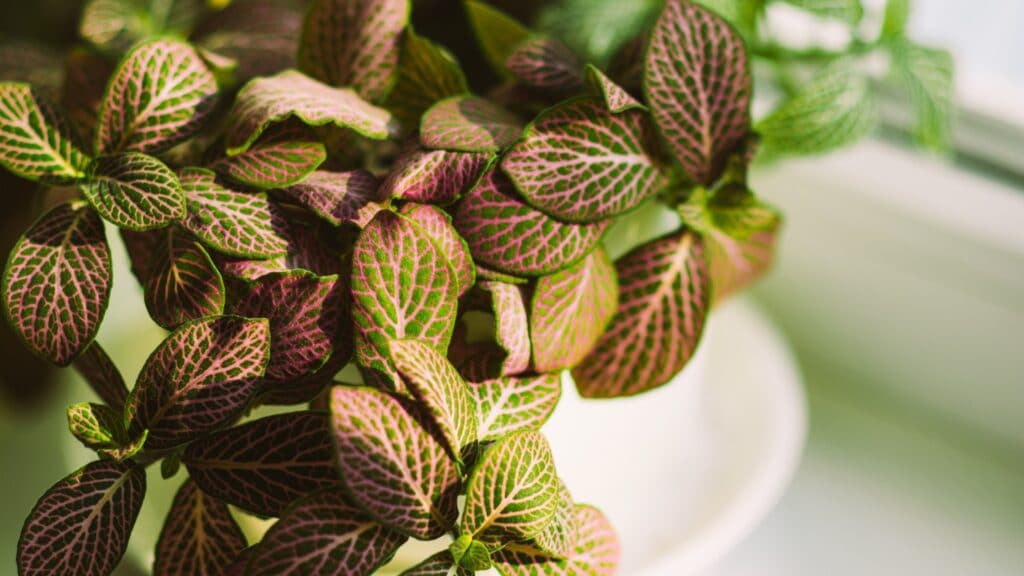
Research shows that houseplants can improve concentration and productivity. They can also reduce stress and anxiety and have a mood-boosting effect.
So, it’s perhaps unsurprising that many people who start off by caring for a single houseplant, often find that it’s not long before they have one or two (or ten!) more.
Another benefit of houseplants is that they can also add more purpose to our days. Since the pandemic, I’ve introduced more houseplants into my small, second-floor flat, and I’ve become so invested in their progress. I feel proud when I see that one is coming into bloom or developing a new stem, and quite sad if one dies or isn’t looking well.
I also enjoy how different each plant is, and I’m always on the lookout for unique and beautiful houseplants to add to my collection.
So with that said, I wanted to share five unusual houseplants that I’ve come across recently.
Congo Cockatoo
Congo Cockatoo plants (also known as impatiens niamniamensis, Hare’s Hybrid, or Parrot Plants) originate from Central Africa.

They have dark-brown stems, glossy, deep-green leaves, and clusters of beautiful yellow and/or red flowers that look like little birds. Typically, Congo cockatoo plants will grow to two or three feet tall.
This tropical plant does well in a brightly lit space away from drafts and should be kept in moist, well-drained soil. As Congo cockatoos are so exotic, you might be surprised to hear that flowers continue to grow in their masses all year round – even in mild climates!
Pineapple Plant
Pineapple plants (or ananas) have been taking the houseplant world by storm – as more and more people have started caring for them indoors. They symbolise hospitality and can make a warm, cheerful addition to any home.

There are two types of pineapple plants: those that are ornamental (known as ‘pygmy’ or ‘dwarf’ pineapple plants) and those that are edible (‘regular’ pineapple plants). However, all belong to the Bromeliad family – which means that they only ever produce one fruit, and once that fruit is ripe or past its best, the plant starts to decline.
But it’s not all doom and gloom, as the top of the pineapple can be kept and replanted. Many adult pineapple plants will also grow baby plants around their base, which can also be potted up and grown until they eventually flower themselves.
Native to South America, pineapple plants enjoy bright, indirect light and soil should be allowed to dry out in between waterings.
Nerve Plant
These striking little house plants are often described as the ‘drama queens’ of the plant world. Nerve plants (as known as fittonia) will wilt quite dramatically to let you know that they need watering – but will perk back up as soon as they’ve had a drink.

Though sensitive, this unique plant has a bold appearance and is loved for its dark green leaves and contrasting red or white veins.
Nerve plants originate from the South American rainforest, mainly Peru. So, it makes sense that they prefer humid conditions, and moist – but not waterlogged – soil. When kept indoors, nerve plants will often benefit from misting. They also thrive in bright, indirect light and should be kept away from drafty areas.
Living Stones
The quirky thing about living stone plants (or lithops) is that they don’t look much like plants at all – more like pebbles. Living stones are fascinating little succulents that grow native to rocky regions of South Africa – and have evolved to blend in with their surroundings so that they’re less likely to be eaten by grazing herbivores.

Living stones also grow incredibly slowly and rarely reach more than 2.5cm above the soil’s surface, which makes them a great houseplant for people with limited indoor space. These curious little stones also come in a range of different colours, from orange to green to grey. Their patterning is wide-ranging too and can be mottled, dotted, lined, or something else entirely.
During the winter, living stones should be kept almost completely dry. They only need consistent watering (every 10 to 14 days) in spring, when new growth begins to develop. Living stones also like lots of light and can be rotated every few days for more even growth.
Coffee Plant
Few people know that coffee plants can also be kept as houseplants. But they’re considered to be one of the toughest and easiest houseplants to care for.

There are a few different types of coffee plant, though coffea arabica is often a popular choice. It has vibrant, glossy green leaves, and star-shaped flowers that produce a sweet scent. The blooms will also produce green fruits that will turn black as they ripen, and each ripe fruit contains two coffee beans.
However, coffee plants do require a certain amount of patience, as most won’t produce a harvest until they are three or four years old.
Coffee plants can grow up to six feet tall if kept in a pot inside and will grow best in moist soil (but not soggy) and bright, indirect light. Misting will also help to avoid brown lead tips.
Warning: Coffee plants are toxic to pets if ingested.
For more plant ideas and inspiration, you might want to check out these 10 flowering houseplants to brighten up your home this winter.
Let’s Have a Conversation:
What’s the most unique and beautiful houseplant you own? Are you planning to add any of the plants listed here to your collection? What do you enjoy about houseplants?





